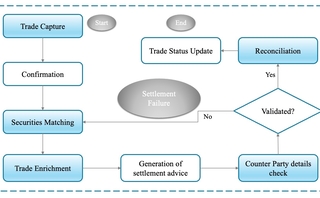Glue42 and Finsemble merge, reshaping interop vendor landscape
The niche interop market previously dominated by Glue42, Finsemble, and OpenFin is evolving—and so are the vendors themselves.

Desktop application interoperability vendors Glue42 and Finsemble have agreed to merge, creating a new company, Interop.io, which aims to enable disparate applications and systems to share information using containerization, APIs, and the Financial Desktop Connectivity and Collaboration Consortium (FDC3) standard.
Glue42 CEO Leslie Spiro will become CEO of the new company, while Finsemble CEO Dan Schleifer assumes the role of president. Schleifer will focus mainly on external-facing duties such as sales, marketing, thought leadership and investor relations, and Spiro will oversee product engineering and Interop.io’s technical vision. Finsemble’s co-founder and principal engineer, Terry Thorson, will also stay on at the combined company.
Glue42 and Finsemble users can expect their current setups to function uninterrupted, but a unified platform that includes backward compatibility with Glue42’s and Finsemble’s APIs will be available in the future.
Interop for interops
Because both platforms are built using the Electron container and programming languages JavaScript and TypeScript, Schleifer tells WatersTechnology that the transition should be seamless for clients.
However, a more immediate impact of the merger is that Finsemble’s customers gain access to Glue42’s products and services, such as Core+, a zero-install web and progressive web apps (PWA)-based platform that allows interoperability between apps on different user machines. Schleifer says that Finsemble had been in the process of building a competing product to Core+ but has halted that development as a result of the merger.
“That roadmap item for Finsemble clients has moved from sometime next year to tomorrow,” Spiro says. “Similarly, we have quite a strong set of capabilities on the server side for managing deployments for centralized notifications, and for metrics that we call Insight to collect how the products are being used. And they again were on Finsemble’s roadmap, and they’ll be delivered very soon.”
In return, Glue42 users stand to gain access to the support of Finsemble’s client success organization and its change management expertise in rolling out interop projects, as well as benefiting from the multiple US technology patents held by Finsemble.
“The two technologies are built in the same language, following a very similar architecture,” Schleifer says. “We are quite literally able to take the best of both worlds and combine those together.”
The combined company will employ “just over 160 employees,” Schleifer says. Additionally, while there are “a handful of people” that will not be signed on to Interop.io, “the vast majority of the staff from both sides” will be retained.
Power struggles
The advent of Interop.io brings further change to a niche space already in flux, which will now be served primarily by Interop.io, OpenFin, and Connectifi, a new cloud-based interop company set up last year by FDC3 creator Nicholas Kolba.
Notably, Connectifi departed from the container technology—mainly Electron—that has underpinned the “financial smart desktop” since the beginning, in favor of cloud, a technology more favored by banks, asset managers, exchanges, and vendors. (Yesterday, Connectifi announced it has closed its Seed funding round, which was led by Blumberg Capital with co-investment from Engineering Capital. Last week, OpenFin announced it had secured $35 million in Series D investment, which was led by Bank of America with “significant participation” from Pivot Investment Partners and ING Ventures, among others.)
All the changes create an unfamiliar landscape for the interoperability movement. Steve Grob, founder of fintech consultancy Vision57, which has been a partner to Glue42, says that these changes are reflective of the generation currently entering the workforce—the most technologically adept group, compared to previous workforces.
“If you’ve been a trader at X bank for 20 years, you’ve just gotten used to the fact that nothing works very well together. And you just assume that’s what your life is, and you’ve gotten on with it—whereas, I think as the next generation enter the workforce, they’re just not going to accept that,” Grob says.
This creates potential opportunities for those serving the interop space, but has also seen the industry go through some painful growing pains.
Schleifer and Spiro say that the merger positions Interop.io to be the largest in their market in terms of paying clients, number of active smart desktops, revenue, and research and development teams, though both declined to say how many clients make up the combined roster.
However, they do agree there’s an exciting, potentially transformative time ahead for their corner of the market, and they hint at the possibility of expanding beyond institutional finance as well. Though Schleifer declines to identify any specific vertical as a target, he says that they’ve seen demand for their products outside of capital markets—in finance more broadly, as well as other industries.
Rival OpenFin—which had been held up as change agent for trading at institutions such as RBC Capital Markets and contributed the original FDC3 protocol to the Fintech Open Source Foundation—has already embarked on broadening its base, expanding to serve the government sector last year, and repositioning itself from finance-specific technology provider to the “OS for enterprise productivity.”
And in 2021, infighting and intellectual property disagreements, which had plagued the space despite its growth, reached a fever pitch inside the interop market as FDC3 maintainers and contributors doubted OpenFin’s commitment to the standard it once owned. (It should be noted that, by all indications, OpenFin is still supporting the FDC3 standard.)
If the interop space holds the potential that its proponents believe it does, then others will come looking for a slice of the pie sooner or later. A merger among two of the leading players creates a bigger company with a surer footing to fend off any potential upstart interlopers, while OpenFin and Connectifi—assuming they aren’t next on the merger and acquisition list—will provide healthy competition in a space that needs to stop fighting over the same slices of the pie and get on with growing the size of that pie overall.
Further reading
Only users who have a paid subscription or are part of a corporate subscription are able to print or copy content.
To access these options, along with all other subscription benefits, please contact info@waterstechnology.com or view our subscription options here: http://subscriptions.waterstechnology.com/subscribe
You are currently unable to print this content. Please contact info@waterstechnology.com to find out more.
You are currently unable to copy this content. Please contact info@waterstechnology.com to find out more.
Copyright Infopro Digital Limited. All rights reserved.
You may share this content using our article tools. Printing this content is for the sole use of the Authorised User (named subscriber), as outlined in our terms and conditions - https://www.infopro-insight.com/terms-conditions/insight-subscriptions/
If you would like to purchase additional rights please email info@waterstechnology.com
Copyright Infopro Digital Limited. All rights reserved.
You may share this content using our article tools. Copying this content is for the sole use of the Authorised User (named subscriber), as outlined in our terms and conditions - https://www.infopro-insight.com/terms-conditions/insight-subscriptions/
If you would like to purchase additional rights please email info@waterstechnology.com
More on Trading Tech
For MarketAxess, portfolio trading buoys flat revenue in Q3
The vendor is betting on new platforms like X-Pro and Adaptive Auto-X, which helped forge a record quarter for platform usage.
Quants look to language models to predict market impact
Oxford-Man Institute says LLM-type engine that ‘reads’ order-book messages could help improve execution
JP Morgan pulls plug on deep learning model for FX algos
The bank has turned to less complex models that are easier to explain to clients.
Nasdaq says SaaS business now makes up 37% of revenues
The exchange operator’s Q3 earnings bring the Adenza and Verafin acquisitions center stage.
Harnessing generative AI to address security settlement challenges
A new paper from IBM researchers explores settlement challenges and looks at how generative AI can, among other things, identify the underlying cause of an issue and rectify the errors.
The causal AI wave could be the next to hit
As LLMs and generative AI grab headlines, another AI subset is gaining ground—and it might solve what generative AI can’t.
Waters Wrap: Operational efficiency and managed services—a stronger connection
As cloud, AI, open-source, APIs and other technologies evolve, Anthony says the choice to buy or build is rapidly evolving for chief operating officers, too.
BlackRock forecasts return to fixed income amid efforts to electronify market
The world's largest asset manager expects bond markets to make headway once rates settle.








